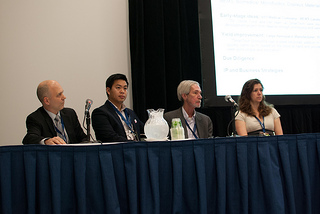Guest blog from Semico Research
There are over 3,000 companies making LED bulbs. Regionally, there are countries like China that have 5-year plans which foster the development of leading SSL manufacturing firms while pushing LED lighting on the market. How many light bulbs do you have in your house? How many are LED? How many lights at your workplace? On the streets and freeways?
If you thought the sensor market was large before, with smartphones and fitness trackers, imagine all the sensors and controls that could go into lighting sources and outlets, with the intent of monitoring behavior and finding trends in order to predict how and where our lighting should be installed.
With MEMS, the entire smart home may have sensors. For example, your walls may have accelerometers built in to help predict and recover from earthquakes. Bulbs may make use of a MEMS microphone to help determine lighting needs. As the price of MEMS sensors continues to decline, manufactures should turn their eye to this market.
For example, imagine having the majority of your ceiling be comprised of multiple types of lights, all of which can automatically be adjusted depending on your behavior. This is important for the home theater system, where in order to play a movie, the screen must be lowered, the system turned on, the curtains closed, etc. But, with smart lighting controls, the mere act of sitting down on the couch at a particular time of the day could trigger all those other actions automatically with the lights adjusted accordingly. How can MEMS contribute?
Perhaps even more useful, intelligent lighting can sense commands from other lighting sources without the use of a wired connection. This effectively creates a 3D map of your environment with the lighting system at the head of it. No more automatic lights that rely on gestures in order to stay on. The lighting system of the future will know if there are living creatures in the room or not. This isn’t far out in the future either, we’re looking at this technology now, and at the point where manufacturing and deployment must work together.
According to the U.S. Department of Energy, 86% of all lighting in residential markets currently have no control system, and 70% of all commercial lighting have no controls. The market penetration rate is so small, and the potential so large, this is a market you should be keeping an eye on. That is why Semico is hosting a Smart Lighting Event on April 23rd in Santa Clara to discuss deployment trends and what opportunities and barriers to entry we have to look forward to. Semico’s CTO, Tony Massimini will be discussing, in particular, how MEMS manufacturers can build a niche within the Smart Lighting market. Join us and register here.
 The panel discussed the MEMS ecosystem and advised medical-device companies on navigating the opportunities and challenges of MEMS product development. Counseling companies not to reinvent the wheel, panelists explained that they can leverage partner relationships to overcome the technical challenges of MEMS fabrication.
The panel discussed the MEMS ecosystem and advised medical-device companies on navigating the opportunities and challenges of MEMS product development. Counseling companies not to reinvent the wheel, panelists explained that they can leverage partner relationships to overcome the technical challenges of MEMS fabrication.